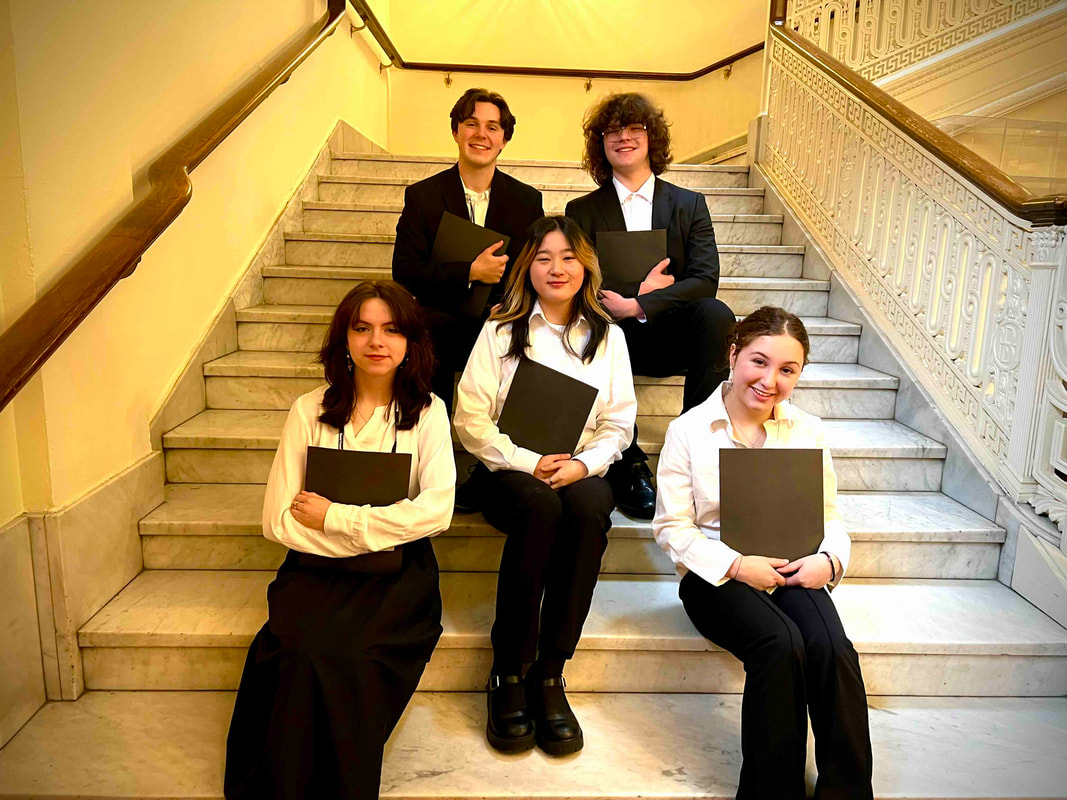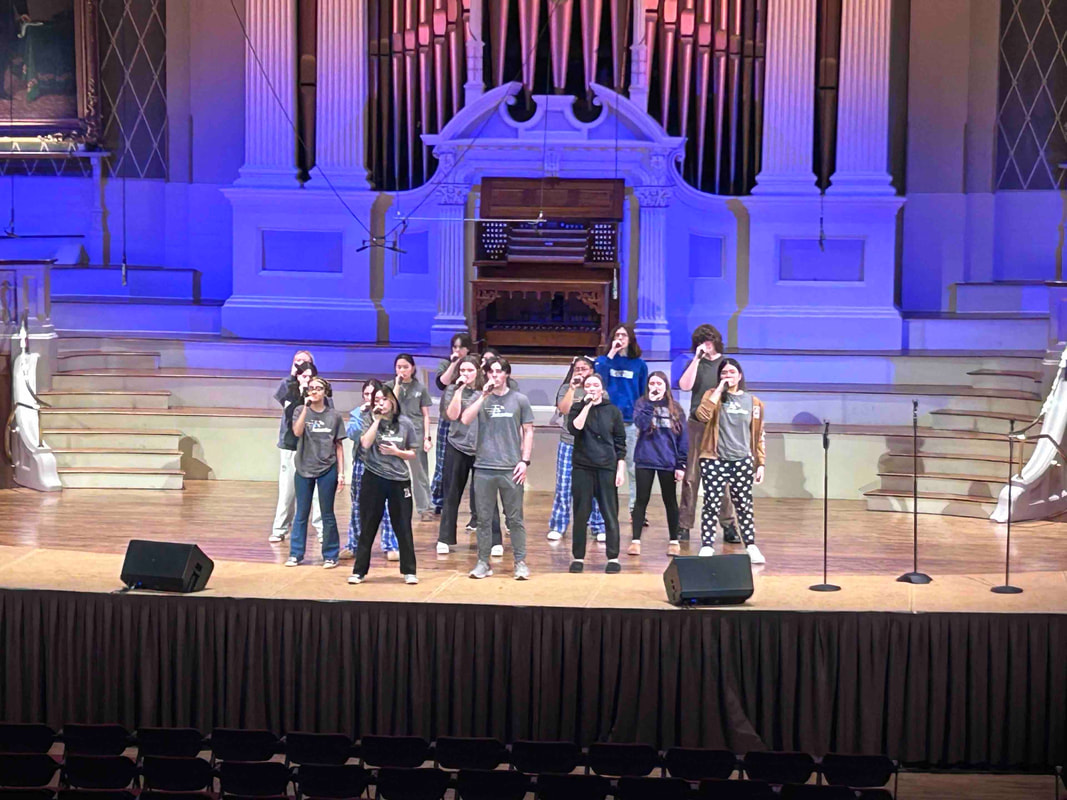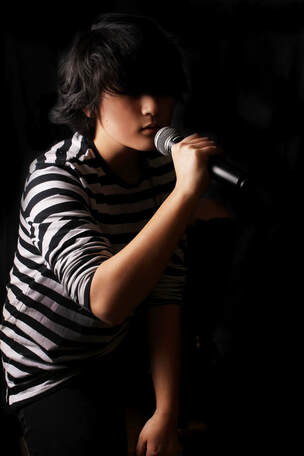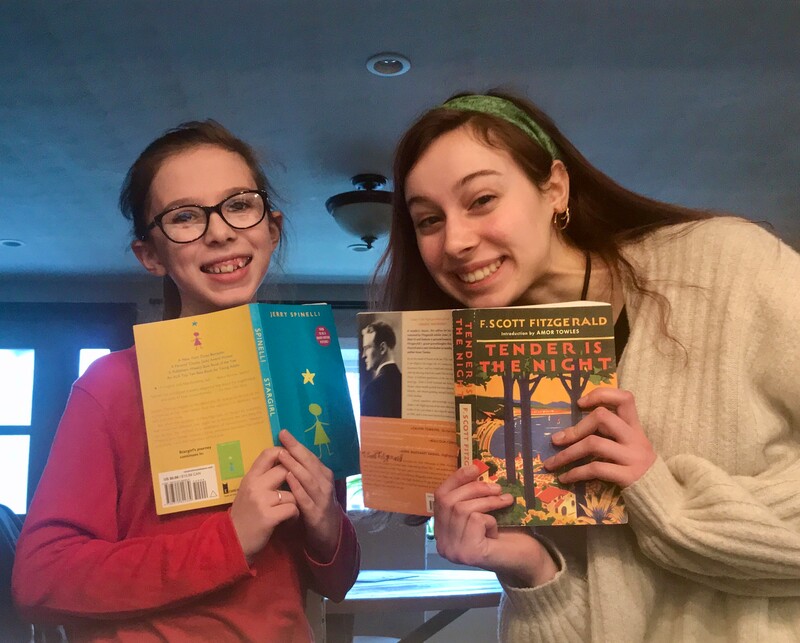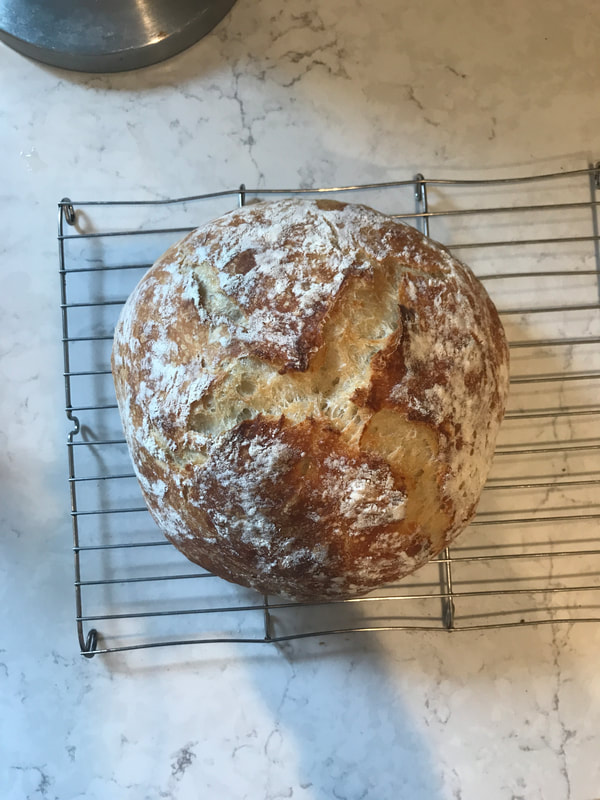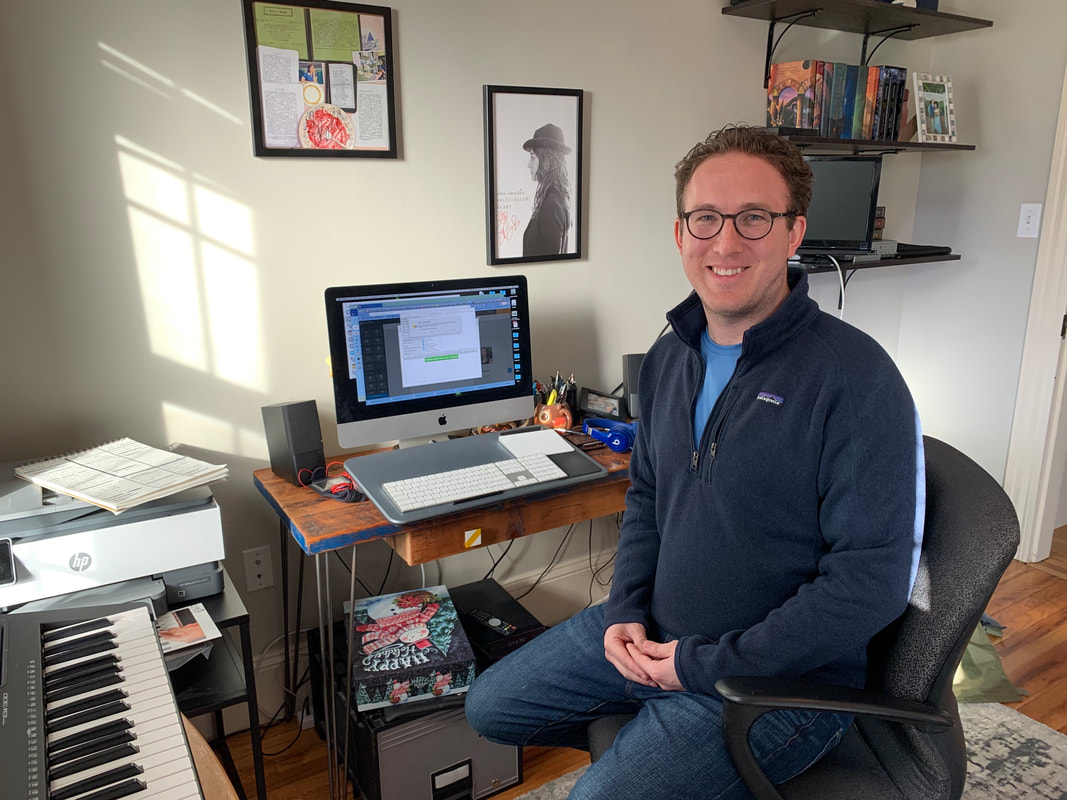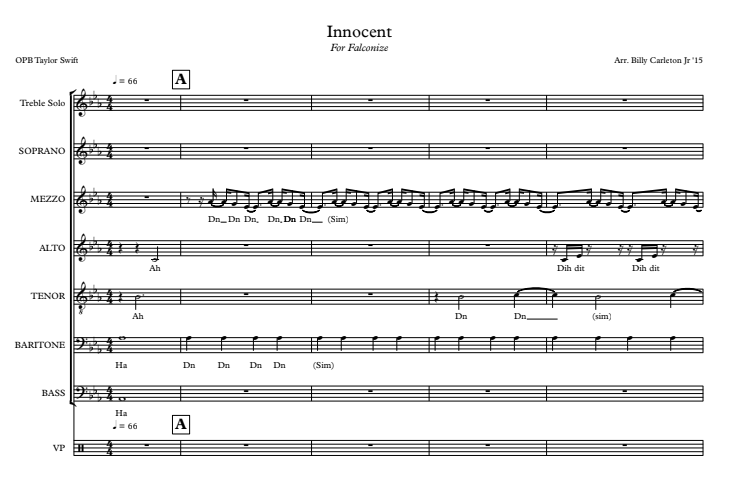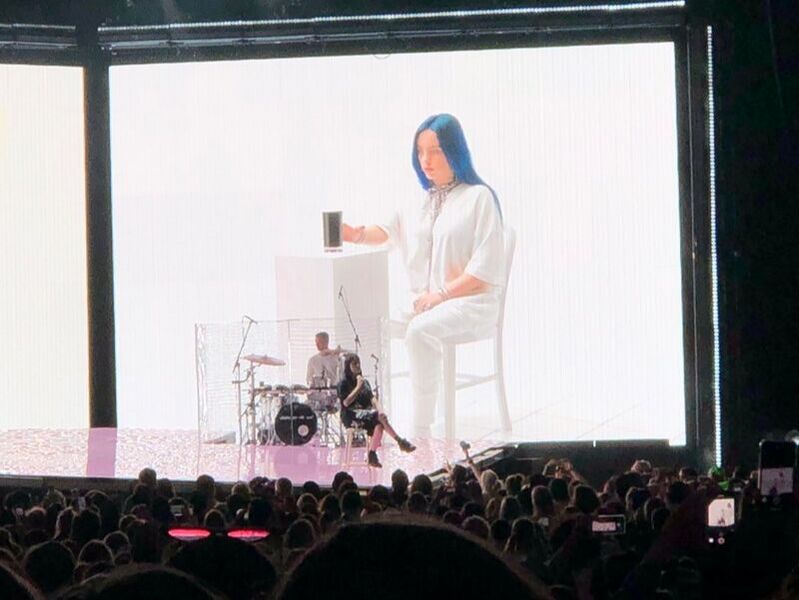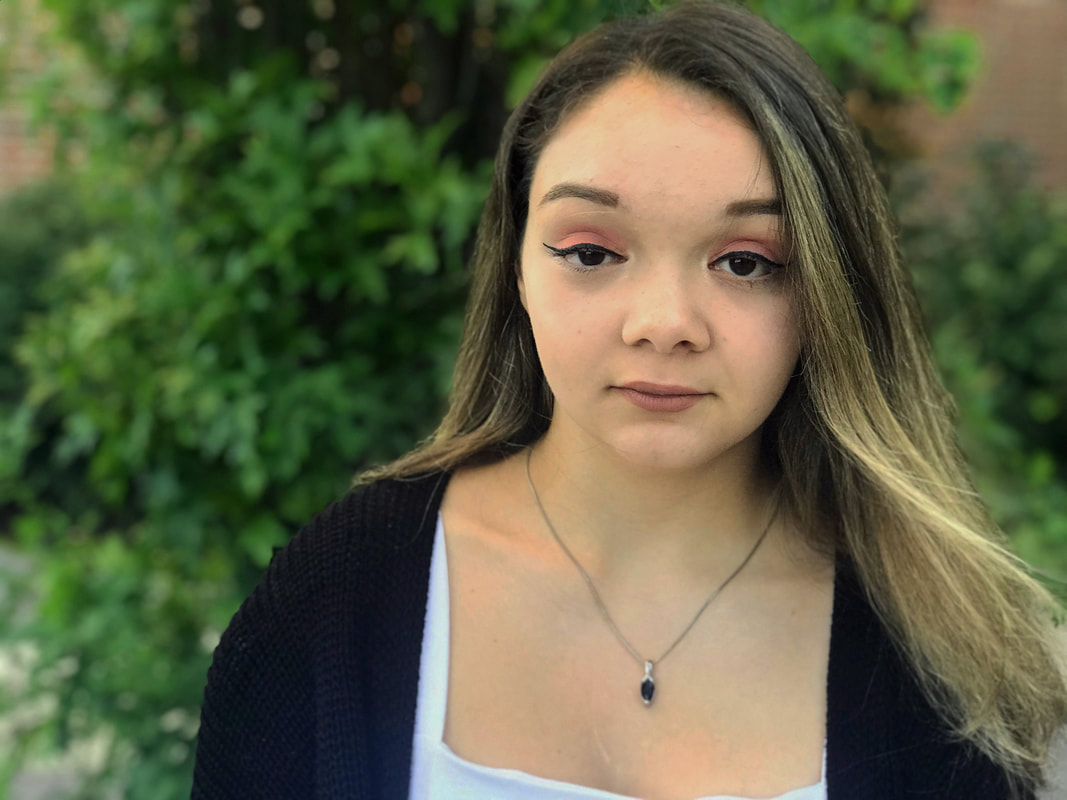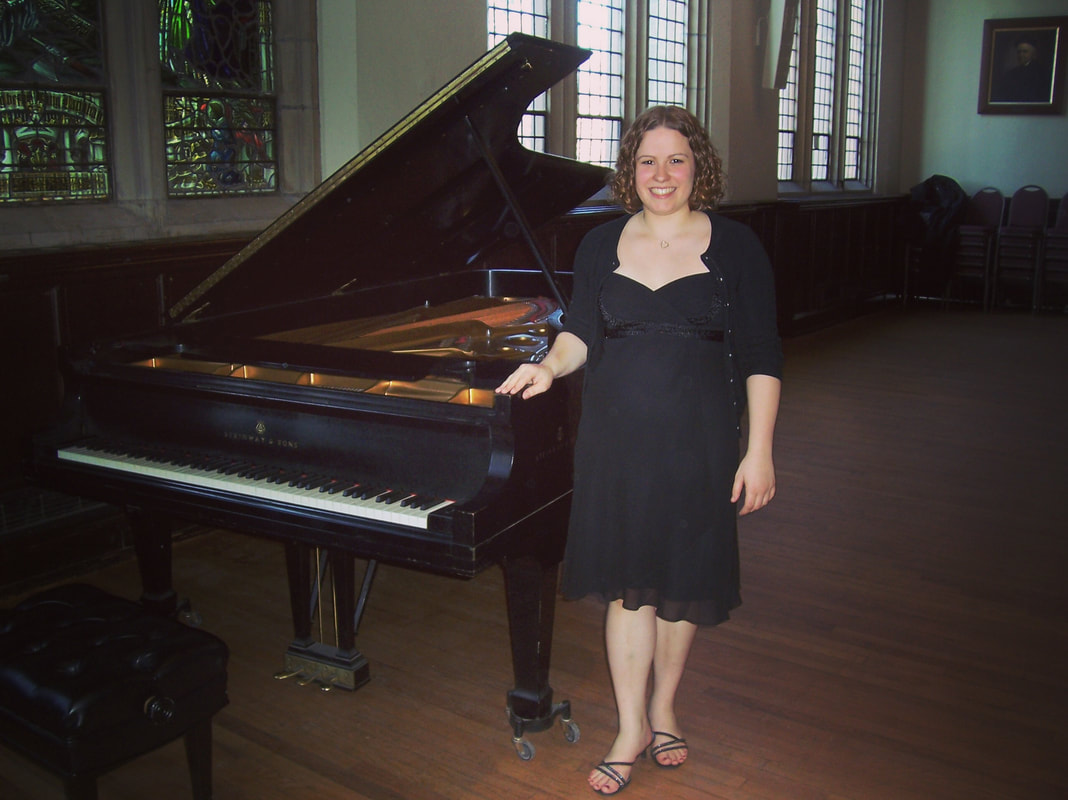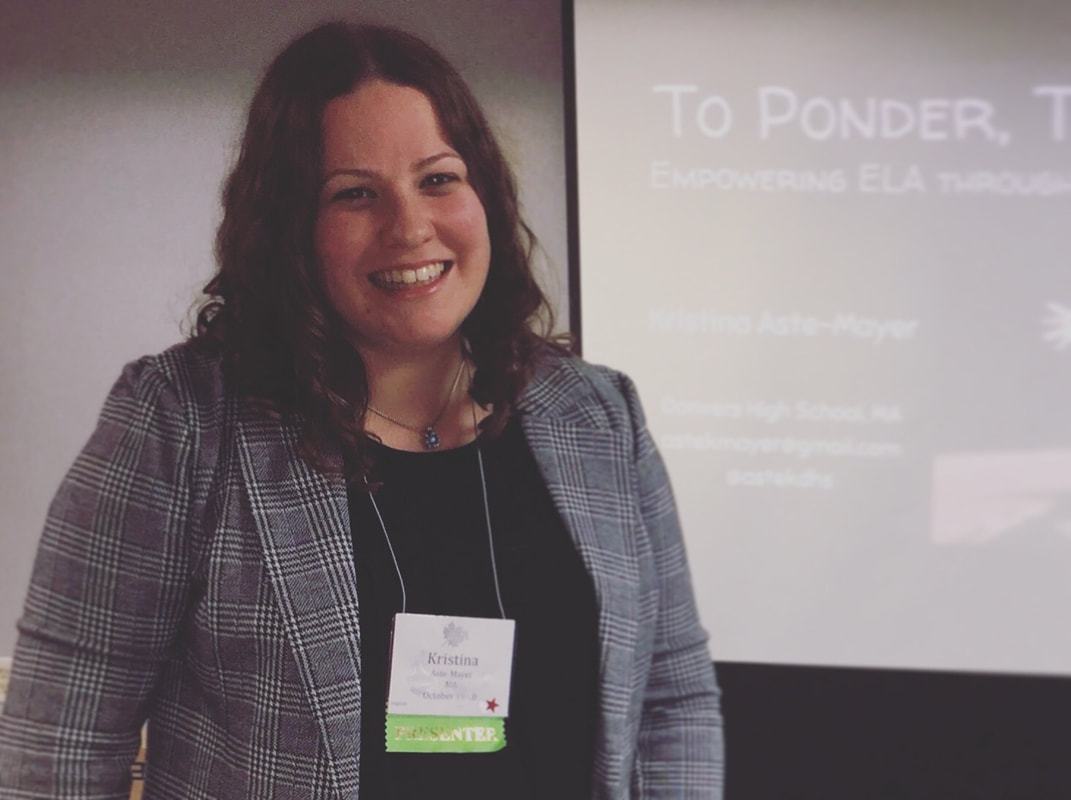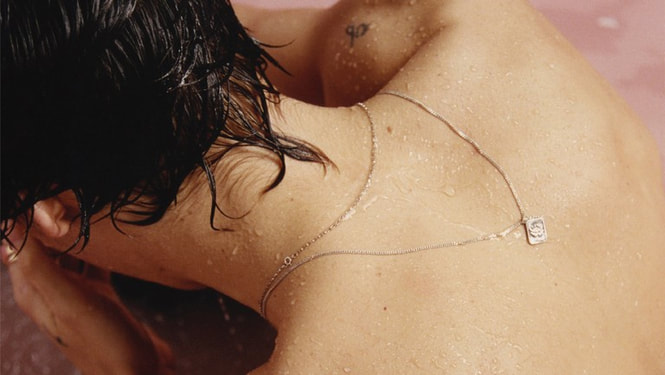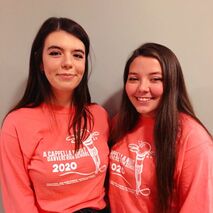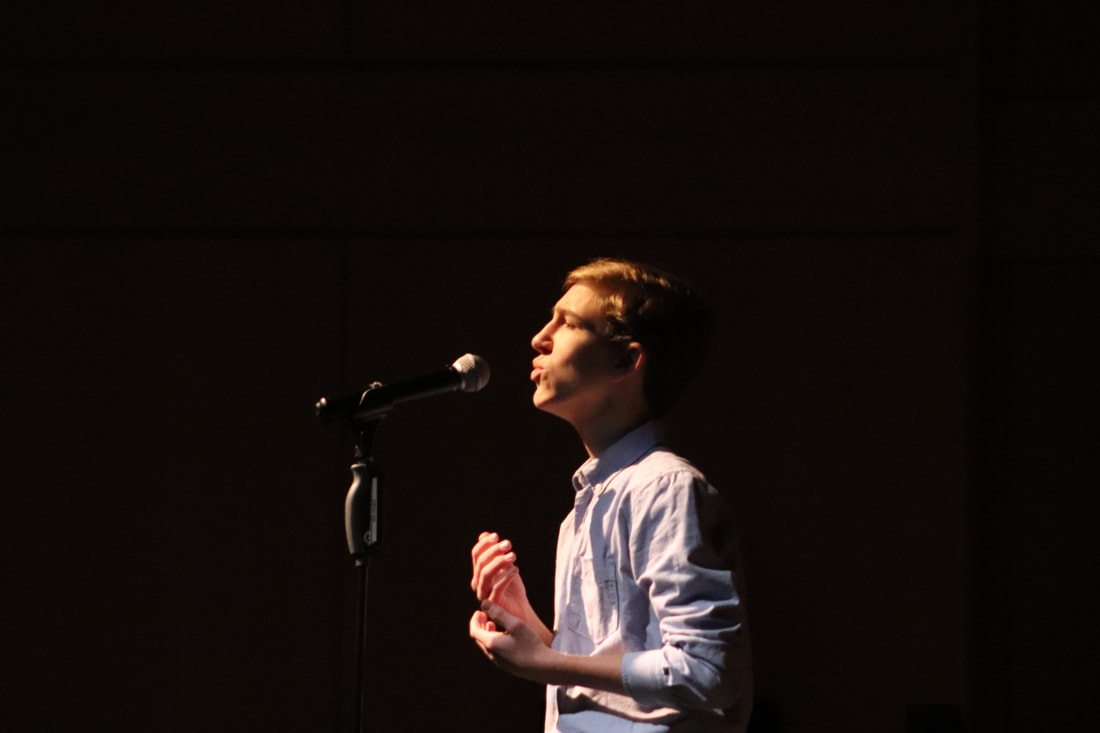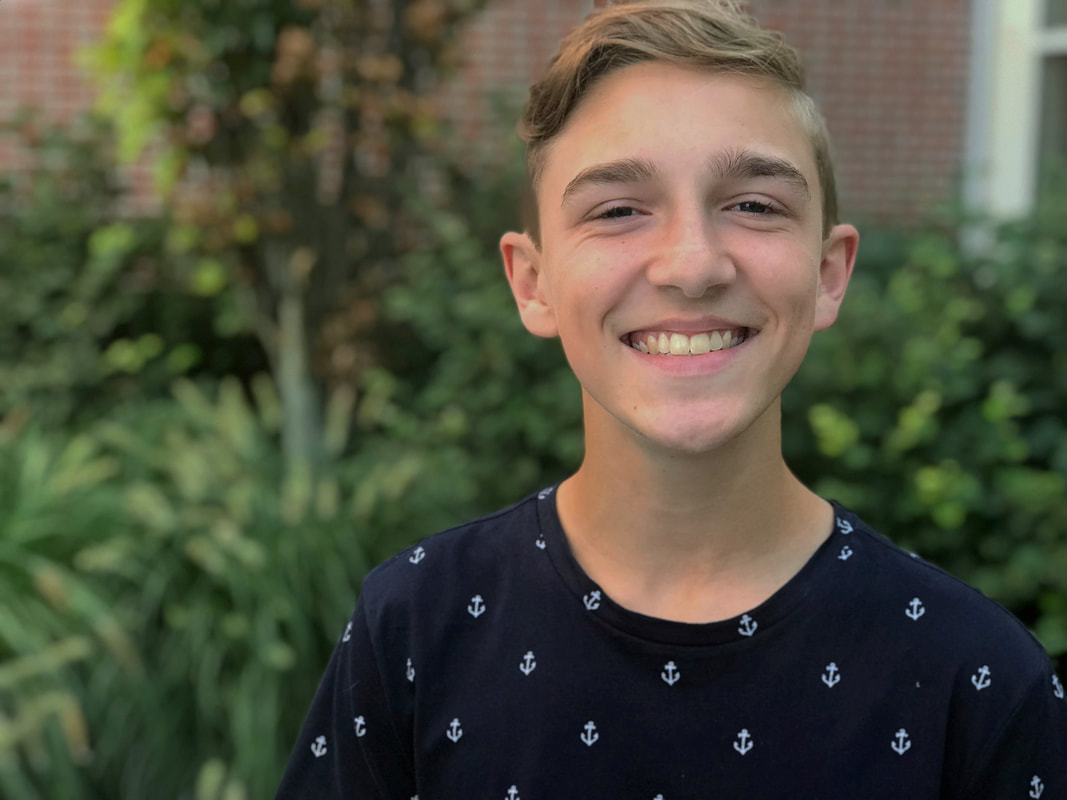|
By: Jason Tucker '26
What can I say, I told you I’d be back! I hope everyone enjoyed their April Vacation! At DHS so many events have happened in the past weeks and there are so many more in the near future! All of these small gigs and events that have been happening recently are just the buildup to our own first Performing Arts Weekend! But before we look to the future, let's talk about what's happened over the past couple of weeks. As the title states, from April 5th through the 7th DHS hosted the MICCA (Massachusetts Instrumental and Choral Conductors Association) Band Festival. Over 30 bands/orchestras from Massachusetts came to get adjudicated by some great judges. Congrats to the DHS Concert Band on earning a gold medal! During that same weekend the DHS Winter Guard competed at the NESBA finals show in Salem, MA. Congrats on their 4th place finish in the Scholastic Regional A Red division with a score of 89.310! Additionally, on March 28th Vocal Alliance performed at the Transgender Day of Visibility event which took place at the North Shore Unitarian Universalist Church on Locust Street. Up next: Performing Arts Weekend! The Performing Arts Weekend will include performances from Academy Theater and the music department with many different groups such as: Concert Chorus, Concert Band, and many more! The weekend will kick-off on Friday night with the spring play “PROMAPOCALYPSE!”, written by Michael Griffo, along with the musical revue at 7:00pm. On Saturday is the Pops Night and Gala, featuring a nice dinner at 5:30 catered by Daniella’s and a concert at 7:00. Tickets for the whole weekend can be purchased by CLICKING HERE. After all of that, we have the third annual Celebration of Music, which is the music department's end of year banquet including food, games, and tons of awards! This year it is happening on Wednesday, May 8th. All music students are invited to attend. Hope to see you there!! And that's gonna wrap it up for a while in the music department. See you soon!
0 Comments
By: Jason Tucker '26 And just like that, we’re back! It’s been a while so I thought this would be the perfect opportunity to get this blog back up (and hopefully keep it going). It’s been quite the eventful two years with new friends making a splash in your life and more seniors sadly leaving. But it’s ok. Because… we’re back!! The arts programs are finally in full swing at all the schools in Danvers! Alright, enough about the past, let's talk about the future. Right now the plans are to transform this into a written by students for students article. It will also hopefully include a section with questions from students, all answered by yours truly. The blog will also highlight any upcoming dates and outstanding student achievements in the choral program and interviews when we can get them. Alright, let’s get started. So, first up we recently had our Spring Concert! As always, the concert band and concert chorus performed, along with the percussion ensemble, flute ensemble, and the clarinet choir. Thanks to everyone that came to see the concert. Next stop: ICHSA semifinals! Today, Falconize will be performing at the International Competition of High School A Cappella at Mechanics Hall in Worcester. The competition starts at 3:00pm and we are really really excited to see and compete with some of these groups again! The line up can be found below. Vibe from Plainview Old Bethpage John F Kennedy High School, Plainview, NY Vocal Point from South Glens Falls High School, South Glens Falls, NY Falconize from Danvers High School, Danvers, MA The Jewel Tones from Marblehead High School, Marblehead, MA NOTEorious from North Reading High School, North Reading, MA The Crescendos from Chelmsford High School, North Chelmsford, MA For Good Measure from Mohonasen High School, Schenectady, NY Valkyries from Valley Central High School, Montgomery, NY Chock Full of Notes from Plainview Old Bethpage John F Kennedy High School, Plainview, NY The Thursdays from Chelmsford High School, North Chelmsford, MA And last but certainly not least, congrats to Pier, Dan, Tim, Milo, and Kaelin who performed at All-state this weekend! Below is picture of them at Symphony Hall. And on that note, thanks for reading and I hope to create more of these posts in the future! Jason Tucker '26 By: Katie Miraglia '22 After many months of preparation, we are finally approaching the weekend of Cappella Night and ICHSA. Or, what I so lovingly call “A Cappella Weekend.” After years of distancing, trial and error, and many zoom calls, these exciting performances are coming back to life. With this, I thought it fitting to revive our blog as well! COVID has hit the arts fairly hard. Activities that we all enjoyed, that pushed us to improve ourselves and provided a safe space were being shut down. The friends we enjoyed spending our afternoons with, were now only to be seen on Zoom. The rooms that brought us a sense of comfort, closed. For many of us, there was an initial struggle. It felt like we were being tested and -quite frankly- it seemed impossible to keep going forward for a while. We were no longer on solid ground. Singing had always been an escape, but it felt like it was being ripped away from us. The hour a day we used to dedicate to our singing was being morphed into something entirely new. While we were remote it all felt so artificial. When we came back, there were initially regulations of how we could sing. It felt isolating. As time went on, and regulations changed, we eventually fell into the schedule we have today. One that feels more normal, more connected and engaged. We can finally hear each other and see each other. And now, our favorite yearly performances are starting to make their way back. I speak for many when I say, we could not be happier. As I was writing in my calendar, circling and highlighting our quickly approaching performances, I couldn't help but wonder what my younger peers were feeling. I've known Milo (sophomore) for almost a year-and-a-half now, and I can confidently say that they have a passion for music but I rarely get to see. They have reminded many upperclassmen why we love our ensembles so much. When I was thinking of who to talk to, they immediately came to mind. And when I reached out, he was very willing to answer some of my questions: KM: How would you describe your experience and Falconize so far? How has this year been compared to years prior? MC: “So far in Falconize my experience has been pretty abnormal compared to some members' experiences prior to me. This year however has felt much more normal as we are able to sing and perform together. This year I feel that we have also been able to emotionally bond with each other on a much deeper level.” KM: What were your thoughts on Fall Jam? How are you anticipating the A Capella Night will be different from what Fall Jam looked like? MC: “Fall Jam being our first performance of the year definitely made us all aware of how the rush of a performance felt but with A Cappella Night being a much bigger or grand performance I think it will definitely have its own feeling of intensity.” KM: What are your thoughts on competition? What are you most looking forward to? MC: “Competition seemed to be so far away for the longest while until it seemed to strike me that we were less than two weeks away… I look forward to being able to share the result of our process and all of our hard work!” KM: How are you feeling about the weekend of A Capella Night and competition? What are your biggest worries, and what are you most excited about? MC: “Although I’m excited to be able to use A Cappella night as a prep for how it will feel to do our set, I am worried about how a back to back performance will affect us during competition. However, regardless, it will be very beneficial for us as we get into more of the headspace of the songs.” KM: Lastly, how have you been taking care of yourself the past few weeks? How are you going to continue keeping yourself healthy and safe for the (intense) weekend? MC: “I have been doing my best to continue to practice my best during rehearsals and to not push myself too much outside of practice. I have been trying to do my best to stay healthy and well and to take the appropriate actions if I am feeling unwell.” With the return of our bigger performances, it's important to acknowledge the turbulent two years behind us. But within our ensembles, there is a sense of forward thinking. We are learning to accept that our future will not look exactly like our past. Our goal as a group for the next week is to remain focused on our work, while also enjoying the presence of the people around us. Appreciating the sound of blending voices on a stage, and being forgiving with ourselves and others for the evolution caused by unfortunate times. I'm so thankful for Falconize. I'm thankful for the program we have become, the incredible friendships we've created, and the set that we have built. I cannot wait to see what we do next this upcoming A Cappella Weekend.
By: Juliet Giangregorio '20
Hey everybody, it’s me again! I hope you all enjoyed these amazing blog posts from our talented guest bloggers as much as I did- it was so interesting to hear everyone’s different insights and stories, thank you guys so much for your thoughtful work! This time is hard for everyone, but luckily we have so many ways to stay connected. We have concerts, libraries, and communication at our fingertips, and although it’s not the same, all we can do is make the most of this situation and do what we can to get life back to normal. That being said, I can’t stress enough how important it is to stay inside and to continue to practice social distancing. Our actions now will have a lasting effect on the future, so it’s so important for us to all do our part. Like many of you, I’m used to singing every day in chorus class. Even though we haven’t been in school, music has still been present in my life, which I’m sure is the same for many of you. I’ve been listening to old favorites, trying some new genres of music, and having lots of jam sessions by myself, and with my family. Twenty minutes ago, my sister and I were pretending to be opera singers. Now, she’s listening to the Grease soundtrack while I’m playing Lana Del Rey (my go-to) through my earbuds. Personally, I’ve been having a very hard time sticking to a routine. It’s been kind of tricky trying to get school work done at home, but in between the procrastination, I’ve found time for some other activities. I’ve baked bread, made a candle, and have been working on reading some books that I couldn’t find time to read during school. If you’re finding yourself facing boredom, I suggest giving Ms. Aste an email- she has lists upon lists of things to do. I miss you all very much, and I hope everyone is doing well! Please feel free to reach out if you’re bored, or you want to talk. I’m always down to play iMessage games. Also, don’t forget to check in with your teachers! They miss you guys. Well, I guess that’s it for now. If you want, let me know how you’ve been keeping music in your life in the comments, or leave some song suggestions- I’m always looking for new music. Stay safe, stay healthy, and stay inside! By Guest Blogger: Alex Grover, Choral Director Hello DHS Chorus Community! Mr. Grover here! I am writing the last post for our stint of guest bloggers during the school closure. First, I’d like to thank our regular chorus blogger, Juliet, for graciously welcoming all of the guests to the Chorus Blog. For the past two years, Juliet has eloquently reported on events and told stories about our chorus program to provide noteworthy content for our website. We will miss Juliet’s kindness, creativity, and energy in our ensembles and on the Chorus Blog next year. Thanks, Juliet! For me, being at home so far has been strange, to say the least. It’s a change of pace, and I am completing a different type of work. I wake up later than usual, and exercise an unusual amount for myself. Some might think this is a good thing, but to me, it’s an unfamiliar addition to my life. To be completely honest, I could spend this entire blog post listing the way things used to be and how they are now, because it is abundantly different (most notably that I actually sit down and eat breakfast everyday, instead of it being on the run or not at all). But, what has become clearer to me, during this era of COVID-19, is my perception of the unknown. When we began this journey through these uncharted waters, steered by a pandemic we did not see coming, I was befuddled by all of the unknown attached to its arrival and effects on our country and world. I read and watch the news everyday (another thing I did not do before being confined to my house), and three weeks in, the known is becoming more than the unknown. We know that this will not just disappear. We know that we must abide by the social distancing suggestions. And we know that school is closed until at least May 4th. Before all of that information became known, based on trusted science and math, I was overwhelmed with the unknown. The unknown is not as overwhelming to me now, and I thank all of the doctors, experts, and responsible humans for their work to help us be sure of what our actions should be for our society’s response to this global pandemic. Now, knowing something I thought would be an unknown for a long time, I find myself yearning for a different unknown. My unknown. I miss the unknown of being a teacher. I miss going to school everyday and not knowing what my day will bring because I have so many forward-thinking and unique students. Prior to this pandemic, my day-to-day consisted of mostly using my voice and piano and interacting with students in person. Working from home is more fueled by writing and a computer, and face-to-face interactions with students and colleagues are limited (albeit still present thanks to technology). Working in a school, almost all activity is dictated by bells and scheduled meetings. In an attempt to maintain this structure, at the beginning of “working from home,” I made a schedule for myself. I get up and read, then go out for a run (weather permitting). After eating breakfast and showering, I work for a few hours. Lunch is next, followed by another stint of working and doing household chores. Finally, dinner and a movie or TV. I thought that making my own check points and knowing what I was doing everyday would solve the anticipated problem of not having school bells or scheduled meetings. Three weeks in, I am realizing that schedules and structures do not fill the void of what keeps me going, my unknown. I can’t wait to get back to school. Despite not sitting down to eat breakfast or having to arrive at work earlier than I would ever choose for myself, I love what is there for me everyday. There are students eager to learn, and in my specific case, sing. Yes, I might not necessarily know how the Chorus is going to sound or perform on any given day or how a student will react to something I say, but it is all still motivating and rewarding. My makeshift schedule has been an OK placeholder the past few weeks and will get me through, but I’ve learned that when at school, I truly enjoy my daily unknown. We know that COVID-19 has taken, and will take many things away from us, including normalcy, family and friends, and how we interact as a society. My heart goes out to all of those severely affected by this pandemic. There will be sadness and hardship, to which many of us may or may not be able to relate. Regardless of it all, I have every confidence we will work together and come out on the other side of this stronger. My best wishes to everyone during this time that you navigate your own unknowns.
By Guest Blogger: Billy Carleton Jr. '15 When I was in Falconize’s first ever rehearsal, practicing Larger Than Life and learning the basics of beatboxing, I had no idea how much those rehearsals, that overall experience of being in the Danvers High School Choral Program, would shape who I am as a singer, arranger and now as a music educator. I look back at a program that had 30-40 kids between the 2 chorus classes we had in the school (this was the year before Mr. Grover started), and look at it now with an amazed expression as about 75-100 students sing together at A Cappella Night. The choral program at DHS provides students with an education that gives them a hands on approach to learning the necessary skills to become a leader in the musical, academic and professional worlds. As an arranger, this is the best environment to start learning your craft and start delving into the growing scene in music that is Contemporary A Cappella. Looking back at my beginnings as an arranger, there are quite a bit of things that I did that I would never ever do again, such as giving Mr. Grover an arrangement that only had 1, maybe 2, measures per page (it turned out to be 50 pages double sided). These are the ten a cappella arranging tips that I wish I knew when I was in high school: 1. Listen, Listen, Listen! To be an arranger, you are creating something out of someone else’s work. You have to make the best choice that you think will enhance or shed a new light on the song’s story. Therefore, you need to listen to the song as much as possible, as if it is your new favorite song of all time. Each time you listen to it, you likely will hear something different. Your focus may shift from section to section as you start to get ideas, and that’s okay! If you are asking when enough is enough, that is a question that I can only answer by saying when the arrangement is done, that is when you have listened enough. You should listen to the song plenty beforehand, and even have the lyrics next to you to help you plan. However, you should always be listening to the song while you arrange. You may never know what idea will pop in your head while you are listening to the original, a cover or another group’s performance. Using all of these as references to your story as an arranger is okay and encouraged. 2. Learn How to Write Clean Looking Arrangements. It’s important to look at the format tool on whatever program you write on (Noteflight, Sibelius, Finale, Muscore). You should be able to change either the size of the score, space between measures, system, note size etc... Make sure that you have roughly the same amount of measures in each system if possible. Most programs should let you alter when the break in systems are and that will help a lot with making the score look organized. Additionally, most arrangers choose not to have repeats or codas to reduce confusing page turning. Lastly, make sure that you know how to write rhythms correctly in a measure. Writing rhythms correctly will make it easier for your performers to understand what you are trying to write and will make it easier to perform what you intend in regards to the rhythmic stress of a phrase (ie: use the invisible barline - see instructional video). 3. Transcribe Other Arranger’s Works Into Your Notation Software. My senior year of high school, I discovered the Nor’easters from Northeastern University and grew obsessed with their arrangements. I was at a loss for words because of how they were able to create such powerful arrangements and rewrite the song almost completely. One day, I decided to sit down and transcribe their arrangement of Counting Stars by ear (with the help of some sheet music to help me with the melody and chords). I learned so much from just that one session of listening and trying to write the parts down correctly. There were a lot of sessions for that one song, and the transcription was not at all close to being correct, but I learned new techniques that arrangers used that I hadn’t learned yet. I learned how to write a simple dance beat in the bass, how to use “catapults” to build momentum when transitioning from one section to another, and about line. All of these things may be advanced for a beginning arranger, but are all things that you can work on developing from the very beginning and start to understand. The longer you implement these types of tools into your arrangements, the more effective their purpose will be when you use them in an arrangement later on in life. 4. Study Vocal Orchestration and Understand How It Affects Your Group’s Capabilities The most common definition for orchestration is the organization of parts in a score or group, such as how an orchestra’s or band’s ensemble is grouped. The instruments are placed in 1.) a specific order on the page, and 2.) combined together as a specific collection of instruments to create an ensemble. The other definition is the one that I will be referring to, the study of an instrument's range and how its color (characteristic of the sound) is affected within certain sections of their range. Studying how the voice reacts in specific parts of the range will allow you to make smarter and more effective decisions for your group. It will also make you think more cautiously as an arranger, which is good. We don’t want every powerful moment to feature a high soprano belt, it sounds great, but realistically, the soprano voice won’t last an entire song if you have them sing high for an extended period. Make a decision to change the chord around so other parts are in their higher part of their range. Thinking of your groups abilities in regards to the sound you want to get as an arranger will enable your group to physically sing your arrangements over a longer amount of time. The other thing that orchestration will affect in your arrangements is balance. Can you hear every single part? Does the tenor’s high E over power the alto’s E on the first line of the treble clef? (Hint: it does) Thinking like this will allow you to create arrangements that sound more balanced and full. You want to hear every part, and every part should sound supported and not tired. 5. Texture is Everything! Texture is the how we combine parts to create a specific part or sound. Simply speaking, the most common textures you’ll see in a cappella are Unison, Harmony (the number of notes in the chord can affect texture), Arpeggiation (a chord broken up and having it’s notes played at separate entrances), and Polyphony (Multiple voices singing different notes and different rhythms from each other). Texture is what makes your audience engaged (or not) in an arrangement. The ear gets bored if it hears the same full sounding chorus over and over again. It needs a change in the texture so that it does not get used to the same sound that it hears. A great example of texture in the professionally recorded world of a cappella is “Make it Holy” by OneVoice, arranged by Rob Dietz. Dietz uses the tenors voice as the theme from the guitars arpeggiation in the original recording by The Staves (you’ll hear it if you put the two parts side by side), and uses the other parts of the choir as the other guitar strings that are being plucked and ringed while the soloist sings over it. When they get to the chorus, they all sing in harmony and build a wall of sound that “wakes your ear up” because something new just happened, it’s not the same broken chord anymore. If you got the chance to hear Falconize’s performance of Innocent by Taylor Swift, I used a lot of textural variation in the arrangement, and used Make it Holy as an inspiration for the entire arrangement. Take a listen to the arrangement and look at the score. See what the parts are doing throughout the arrangement. 6. Go to A Cappella Festivals, Reach Out to Your Favorite Arrangers, Collaborate, etc. One of the most inspiring experiences I had in my a cappella career was attending The Vocal Company’s NXTLVL: ACASWAG. This was a week-long, arrangement focused, a cappella workshop where I got to work with the best in the business and learn about developing my story in arrangements, and identifying my sound as an arranger. I also met my arranging idol, Rob Dietz. I was able to get a one-on-one lesson with him and learn how to write a more effective bass line, something that I was working on since my senior year of high school. This experience literally brought my arrangements to the “next level.” High schoolers can do this too. CASA runs an a cappella festival in Boston called BOSS (Boston Sings) where they have professionals give lectures on topics in a cappella in hopes of bringing your skills up in whatever categories you want. There is also Camp A Cappella out in Ohio which is run by Deke Sharon (Known as “The Father of Contemporary A Cappella”) and is a week long experience where campers will attend a cappella classes throughout the week and have a giant concert at the end where they perform in small ensembles. This sounds exactly like my last festival or experience that will help you, A Cappella Academy. This is run by Rob Dietz, Shams Ahmed (Arranged for the Nor’easters) and Ben Bram (Arranger for the Pentatonix). These camps will introduce you to so many people who will influence your taste and choices as an arranger. Reach out and write a song together, get their input on your songs, do the same for them. You don’t have to learn arranging alone, we are all growing together as arrangers, myself included. 7. Starting Arrangements Last week I actually made a change to how I start my arranging process. I have always known about this method, but I had my own established method that worked for me and I was comfortable with it. But after an arranging workshop with Shams Ahmed and Ben Brams, I wanted to try it out. Take your song and write out the melody completely. After that, sing yourself a bass line while listening to the melody. Go section by section if needed. This will allow you to create a groove that is very natural to the song. You do not have to get the notes/pitches right either. Just take the root of the chord, and sing the rhythm. Write that into your program and that is your bass line (for now). Notice how I didn’t tell you to look at the sheet music for writing out the bass line. Use your ears and creativity to create the bass line. Only copy things from sheet music if it’s the melody or some cool bass line that you think is important and integral to the arrangement. From now on though, this will be my method: Write the melody in full, sing the bass line and transcribe it. After you have done that, then you can start to work on the inner parts. You may want to go one part at a time, or all the parts at once and have a section done. Whatever works for you is the best way. Do not be afraid to change the melody or bass line too once you start adding in your other inner parts. You can’t make big moments consistently in arrangements if you are not actively changing and adapting what you have. 8. Arrange A LOT I once told Mr. Grover that I had 30 arrangements written one time in junior year, a year after Falconize started. He was shocked and surprised, and the fact I told him that it would take me 4 hours to write one surprised him even more. Granted, these arrangements were literally the same exact thing over and over and over again. Same rhythms from arrangement to arrangement, same types of random jumps in parts that didn’t make sense in regards to the line, all the things that most beginning arrangers will do. But with each new arrangement, I learned something new, or I wrote a line that I really liked that I would want to use in another arrangement. These are reasons to arrange a lot. You cannot grow if you “stop and go” when trying to learn a craft like arranging. You have to work on your craft regularly so that you are able to develop and improve your skills. Along with arranging a lot, have your group perform your arrangements when possible. Using a piano sound or a choir sound (though I would highly advise against using midi voice sounds) on your notation program and actually hearing the arrangement live are two completely different things and will show you what needs to change. It’s okay and encouraged to make those edits from rehearsal to rehearsal so that you are able to get the sound you want. Shams Ahmed did it constantly with the Nor’easters. It’s how you learn what works and what doesn’t. The more you do it at the beginning, the less you will have to do later on and the more confident you will be in your decisions. 9. Explore Different Methods of Arranging The leading arrangers in a cappella today arrange strictly by ear. They do not use sheet music, rather they record themselves singing the parts they want in the arrangement. You can easily start this by either using a DAW (Digital Audio Workstation) on your computer like garageband, pro tools, audacity, etc, and importing the original song’s MP3 into that application. You record yourself singing the melody about 2-3 times, record yourself making a bass line about 2-3 times and fill in the inner voices, each voice getting about 2 recordings, all while listening to the original while you are singing. This is a great way to get your ear trained and will show you exactly what your arrangement will sound like before you bring it to your a cappella group. Another great way to record yourself and arrange is using a looping machine. A lot of professionals will use it to start off an arrangement, or they will record themselves singing parts in the arrangement, loop the recording, and try and find something that will work with those parts. The repetition makes it easy to come up with parts fast. Different methods of arranging will allow you to experiment with new musical writing tools that you may not have thought of if you were writing only in a notation program. 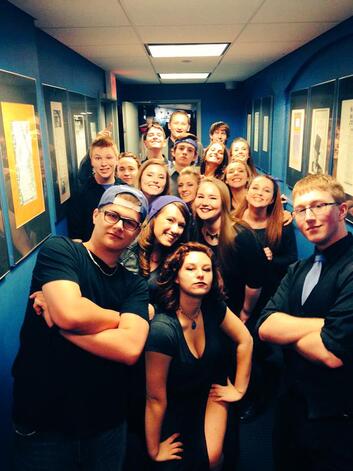 Falconize in April of 2015 before performing at ICHSA Finals in NYC Falconize in April of 2015 before performing at ICHSA Finals in NYC 10. Be Patient and Take a Break. As I mentioned, I did arrange 30 songs between Sophomore and Junior year of high school. By the time Senior year came, and Mr. Grover, our president and I were planning our ICHSA set, my creativity was fried. It was harder to make arrangements because I was arranging so much, trying to get to the level of arrangement quality that I saw at the previous year’s ICHSA semifinal. I struggled arranging Better Dig Two, the opener to our third place set at the 2015 ICHSA Finals. During that process, I thought that this song should not be written for a cappella, and would put it off a lot. I got it done, and the end result sounded very good. It got great feedback at Finals in regard to its textural choices, energy driven climax, and opportunity for the soloist to tell the story effectively. If I had taken a break whenever I felt like I was in a creativity slump instead of working through it, the same result would have come with a lot less frustration. I overworked myself when I arranged for a group out in Minnesota once, and my creativity suffered. I took the whole summer off from arranging, and started Innocent for Falconize in 2018 as my first arrangement back from the break. When you are arranging for groups, it is important to give your mind a rest, get good sleep, eat well, and exercise. All of these will affect your brain’s ability to function, affecting your overall creativity. Once you overwork your brain, it takes a while to rebuild your creativity and get back to that level that you were at before. Arrange, Arrange, Arrange, but do it safely. 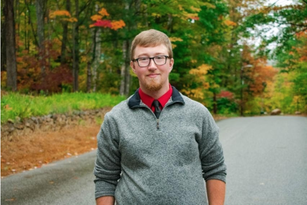 Billy Carleton Jr was a graduate of Danvers High School in 2015 and was the first PitchPipe of Falconize. Billy received his Bachelors in Music Education (Voice) from the University of New Hampshire in 2019. Currently, Billy serves as the Director of Instrumental Music and A Cappella at A. Crosby Kennett Middle School in Conway, NH and the Choir Director at the Jackson Community Church in Jackson, NH. Billy has arranged for multiple high school, collegiate, and semi professional groups across the United States, notable groups being DHS Falconize, DHS Deception, Salem High School WitchPitch?, UMass Amherst S#arp Attitude (Sing That Thing 2016), and Due North (2018 Chicago Harmony Sweepstakes Champions). If you would like to have Billy come in to work with your group, or arrange for your group, feel free to contact him at [email protected]. By Guest Blogger: Maddie Mercurio '21 Hi everyone! I hope you’re all staying safe and practicing social distancing! For those of you who don’t me, my name is Maddie and I’m a junior here at Danvers High School. I am a HUGE Billie Eilish fan and today, I thought I would share my top 5 Billie Eilish songs. 5. come out and play Starting off this list, we have come out and play! This song was originally featured in Apple’s 2018 Holiday Campaign entitled, “Holiday - Share Your Gifts.” The song went alongside an animated video of a young girl who is bursting with creativity, but is too shy to share it with the world. One of the reasons why this is my favorite of mine is because of how different this song is compared to some of her others. My favorite part about this song is how it’s not as intense and upbeat as some of her other songs. It’s very laid back and has a lot of room to grow. The lyrics are absolutely beautiful and this was a release that really took me by surprise. 4. COPYCAT This song was on her debut EP, "don’t smile at me" and it’s still one of my favorites from the EP. It’s one of her more upbeat songs, which is one of the biggest reasons why I love this song. The lyrics are also very relatable because the song takes aim at people who try to pretend they’re somebody that they’re not. (We’ve definitely all met that person before). More specifically, the people who take after what others around them do and try to present themselves to become more “acceptable” in society. The whole concept of the song is just absolutely incredible. The video I included is an acoustic version of the song. I enjoy this version a lot because it’s very different from the studio and the live version. But, the live version of this song goes HARD and everybody is just bouncing off the walls and singing. It’s a really incredible experience. 3. ilomilo When Billie released her debut album last year, this was (and still is) one of my favorite songs off of the album. It’s very different from anything else on her album. Fans were quick to notice that the song’s name was based off of the 2010 puzzle game of the same name. In my opinion, this is one of the most underrated songs off of the album because the style of the song is very unique and it’s different from anything that she has ever released. 2. ocean eyes I know, I know. This song is old and a lot of people think it’s overrated. But, this was one of the first songs I heard from her. I was in the middle of doing some homework and it came up on my recommendation on Spotify. I decided to listen to it and I don’t regret that decision one bit. Her tone is so rich in the post-chorus and it’s such a beautiful way to end a song. The introduction is absolutely gorgeous. I don’t have much else to describe this song other than the fact that it’s an amazing song, regardless of how overrated or old this song is. 1. everything i wanted Finally at number one, we have one of my all time favorites, "everything i wanted!" Although this song is one of her newer releases, it will always have a special place in my heart. I went through one of the most difficult times of my life last year and it taught me a lot about myself. I was in a much better place when I heard this song for the very first time and I had chills down my whole body. I remember sitting in my room, just absolutely in awe. I had never felt such a deep and personal connection to a song. My favorite part about this piece is the chorus because I think it was so beautifully written. The contrast between the verses and the chorus is lyrically incredible and the difference between the two is real and genuine. That’s it for my list today! Thank you guys for taking some time to read. If you want to share some of your favorite Billie Eilish songs, leave them in the comments below. Stay safe and I hope to see you all again soon. :)
Hello! I hope everyone is safe and healthy. I’m Ms. Aste, a DHS teacher and friend of the DHS chorus program. I am thrilled to be a guest blogger! For those who don’t know, I was a double major in college, focusing on English and Music. My primary instrument is piano, but I also played percussion in band and sang alto in various chorus groups. I now accompany two choirs and fill in at area churches on piano. As I prepared this post, it was tough to narrow down just five composers. My favorites for piano include Debussy, Chopin, and Ginastera, but given that this is a chorus blog, I opted to pick five significant vocal works instead. I also can’t resist the urge to teach, so I will go chronologically in order to illustrate major movements that guided the evolution of Western choral and vocal music. 5. BAROQUE PERIOD, roughly 1600-1750: Johann Sebastian Bach Anytime you harmonize, thank J.S. Bach. His approach to counterpoint defined tonal music for centuries. Although choirs had existed across Europe throughout the Middle Ages, they often sang one melodic line in unison. By the fourteenth century, though, theory and notation spread rapidly, and by the fifteenth century, religious Masses became vehicles for choral performances. During the Renaissance, society was not exactly secular, with sacred composers like Machaut, Dufay, and Palestrina dominant. By the seventeenth century, the Church’s lessening political control of Europe helped non-religious music flourish, especially instrumental arrangements and several new music styles: the Baroque era. Devout composers like Bach still experimented with Christian Mass settings, though. His Mass in B minor is one of this period’s masterpieces, and its movements date from different periods of his life. Five-part choral writing exists throughout the work. There are nine arias and duets, fourteen ensemble sections for six and even eight voices, many instrumental solos, and a vast variety of styles. The performers here are the Netherlands Bach Society, and if you only listen to one part of this recording, make it the “Dona Nobis Pacem” at 1:45:17. Hard to believe that there are only twelve vocalists! 4. CLASSICAL PERIOD, roughly 1750-1820: Wolfgang Amadeus Mozart If Bach captured a new vocabulary for how to write music - many voices in harmony - then it was Mozart who made that vocabulary laugh. He composed hundreds of pieces for a vast array of contexts, and what unifies them all is an attention to texture and structure. During the Classical period, music shifted away from the ornate polyphony of the Baroque era and became “lighter.” Melodies assumed clear phrases and distinct cadences, with elegant ornamentations that were well-constructed and not overly done. When I sang in chorus, one of my favorite pieces was Mozart’s “Ave Verum Corpus.” As an alto, it was thrilling to hold those half notes in steady rhythm as the sopranos leapt high above us. Even though the piece is only forty-six measures, it packs much emotion. On the score, Mozart wrote “sotto voce,” or subdued: performing this piece well means keeping it simple and direct. I selected this recording because Leonard Bernstein (another composer you should recognize – Google him if you don’t!) is the conductor, and he does a sound job of creating atmosphere and building a pensive mood. Filmed at the Basilica of Waldsassen in Franconia, Germany, the performers are the Chorus and Orchestra of Bavarian Radio. 3. EARLY ROMANTIC PERIOD, roughly 1830-1860: Ludwig van Beethoven So, if Bach established a choral vocabulary and Mozart provided choral joy, then Beethoven ignited the flame of choral passion. Many music historians claim that he set the tone for the romantic period, thanks to his unconventional choices and emphasis on free expression. While the early and middle periods of his life adhered to classical conventions, Beethoven’s later works featured stylistic innovations that laid the groundwork for future composers like Berlioz, Wagner, or Mendelssohn to explore further. Attached is the 4th movement of Beethoven’s Ninth Symphony. This was the first symphony to feature a mixed chorus, specifically featuring that ubiquitous “Joyful, joyful” melody that I play frequently at the church. Beethoven’s decision to combine a symphony with Schiller’s poem “Ode to Joy” was radical. If you’re pressed for time, jump to minute 6:00 and feel the rush of “crescendoing” emotion building up to the tenor’s cry of “O Freunde!” at 6:17. By transforming a vocal melody into a complex symphonic statement, Beethoven exuded Romantic ideals of transcendence. This recording includes a graphical score in which the string instruments are rhombi, the brass and winds are colored rectangles, the percussion instruments are gray, and the vocal parts are ellipses. It’s dramatic to see such a range and density of shapes over the course of one movement, and I would LOVE to play this timpani part someday! 2. LATE ROMANTIC PERIOD, roughly 1860-1920: Amy Beach As an English teacher, the Romantic period resonates with me. Although “romance” is now equated with love, it once meant “journey,” and this movement earned that label because it prized emotional expression. In literature, authors like Wordsworth, Shelley, and Byron led the way with daring poetry and imaginative novels, and in music, composers like Schubert, Schumann, and Liszt emerged. Romantic traits include a wider range of dynamics, elaborate harmonic progressions, and new structures like the rhapsody, nocturne, or song cycle. Much of the piano literature I studied stems from this era. In selecting a vocal composer with these characteristics, I decided on Amy Beach, a pioneering female composer who wrote about 150 songs. She was also the first American female to compose and publish an original symphony. During the Romantic period, arrangements for piano and solo voice became popular. The song below, “Ah Love, But a Day,” is from Three Browning Songs, Op. 44, and is perhaps her best-known work. Pardon the old-fashioned video quality and cheesy orchestral setting, but I couldn’t resist this opportunity to introduce you to another influential musician. An acclaimed operatic tenor of the 20th century, Jussi Björling’s legacy and richly inflected phrasing continues to influence many singers. 1. TWENTIETH CENTURY AND BEYOND, roughly 1920-now: Eric Whitacre Key characteristics of modern music definitely do NOT include homogeneity. Disillusioned by wars and societal upheavals, twentieth century composers reacted to a changing world by innovating rhythms, melodies, timbres, and tonalities. Because they experienced unprecedented creative freedom, composers experimented with performance techniques and reinvented music forms. Thanks to advances in sound recording and technology, musicians had the resources to play with sounds. Recently, I attended a Boston Ballet performance with my niece, andhat night’s program highlighted twentieth century composers like Stravinsky, Phillip Glass, and Thom Willems. It was wild to hear electronica at the Boston Opera House! If you have ever gazed at the Eric Whitacre poster in the DHS Chorus Room, then you are aware of one such composer. Based out of Los Angeles, Grammy award-winning Whitacre writes orchestral works and is known for his music composed for vocal ensemble. His “Virtual Choir” is a phenomenon with over forty million views, and below is its first performance, “Lux Arumumque.” Inspired by a short Christmas poem by Edward Eschatin, the title is Latin for “light and gold.” Charles Anthony Silvestri then translated the text into Latin for Whitacre, who rendered the piece into a lush arrangement for mixed chorus. Another fun fact that you should know: after Whitacre arranged the piece for wind ensemble in 2005, Mr. Daniels and I began performing it together frequently in BC Symphonic Band concerts! Thanks so much for reading this blog post. Who is YOUR favorite composer? If you could participate in a Virtual Choir, what piece would be best to perform? Stay safe and I hope to see you all again soon!
By Guest Bloggers: Samantha Longo '21 and Hana Stone '21 Hey guys! Our names are Sami Longo and Hana Stone, and we are so excited to be guest bloggers. We are both juniors and we are in Mixed Chorus here at DHS, and Hana is also in Ingrid Sound. In this article, we will be ranking our top five songs from Harry Styles’ two albums, Fine Line and Harry Styles. On May 12, 2017, Harry Styles released 10 brand new tracks on his debut self titled album. This album was highly anticipated by many fans that Harry had gained through his years with One Direction (they are still on their hiatus). Sami and I selected 5 songs that we felt best represented the album as a whole and showcased some of his best artistry. In fifth place we chose the single, Sign of the Times, for which he created a music video. Critics described it as a pop rock and soft rock piano ballad. This song has a tremendous build and is stacked with emotion that can bring you to tears. Next up, in fourth place, is From the Dining Table. This song has a slower tempo and has sweet and simple lyrics. It has a variety of instruments but it maintains a very acoustic sound. This song also has beautiful chords and harmonies at the end that give it a bitter sweet sound. In third place, we chose Ever Since New York. This song keeps a moderate tempo, and it’s not as upbeat as others on the album like "Woman and Carolina." This song made the list because it isn’t like anything else on the album; the style and vibe isn’t comparable to the other songs. The lyrics feel very intentional, and there is a story you can follow when you listen. Next we have Only Angel, in second place. This song is so incredible and takes on one of the more different styles in the album. Similar to Kiwi (which has a music video), it leans to a more rock genre with more creative approaches to words, fun and different sounds, screams, and more electric guitar and drums. Despite the genre of the song being rock, it isn’t too overpowering and loud. The beginning of this song has a little intro that is calm and angelic, but then the rock comes in; it is a fun transition. The lyrics and vocals are very strong and have great imagery. And finally, our first place choice is Meet Me in the Hallway. This song has a slow tempo, and gives a solemn vibe. The vocals encapsulate the emotion of pain and distress. The lyrics tell a story and are filled with memories. The overall audio of the song is faded and echoey, but also strong during the chorus. On December 13th, 2019, Harry released his second solo album, titled Fine Line, with 12 tracks. In this album, he tried some new styles and sounds in some songs, but also stuck to a similar style to the first album with other songs. These songs are what we picked for our top five that show off all the aspects of the album and all of the different styles on it: In fifth place, we chose to put Treat People With Kindness. We decided to put this song in the top five of the album because it definitely has a unique style and sound from his other songs from Harry Styles and Fine Line. This song has a catchy chorus with backup singers and it is overall a really happy and upbeat song to listen to; it is sure to put you in a happy mood whenever you listen to it. In fourth place, we put She. We thought that this was overall just a really good song on the album and has a similar sound to "Woman" from Harry’s first album. She has a slower tempo and has a lot of good instrumentals that go along well with the lyrics. The last two minutes of the song is just a long guitar solo and it adds to the overall vibe of the song. In third place for Fine Line we put Golden. We thought that this song had a similar style to Adore You (a single, with a music video), which was almost on this list, but didn’t make it. We thought that since Golden and Adore You were similar, we would put one, and we chose Golden. We thought that Golden overall just had a really good vibe and is a really nice song to listen to. The lyrics are simple but work with the melody and the background music to make it a really good song. The chorus is layered and has a really chill and nice sound that makes it one of the best songs to listen to on the album. In second place, we have Fine Line, one of the slow songs on the album. Fine Line is the title track of the album and definitely lives up to the name. It has one of the slowest tempos of the whole album and is also one of the longest songs on the album. The lyrics of Fine Line are deep and meaningful and the guitar in the background is quiet and soft to make the lyrics more impactful. It is a really unique song on the album because it has a much softer sound than the rest of the album. As you listen, there is a story within the lyrics and the music, which makes it an emotional song. Over the course of the song, it builds up to get louder with more instrumentals, which leads to a big ending that closes out the whole album in a really nice way. Finally, for the best song on the album, we chose Sunflower vol. 6. We think that this song is the best song on the album and encapsulates the theme of the album really well. It is a really upbeat song and has a lot of different elements that make it unique. The song has cool instrumentals and a really fun tune throughout it and together they make the song more interesting and fun to listen to. We thought that this song was not really comparable to any of the other songs on Fine Line because it is so different, which is why it is first on our list. Also, there is a funny and cool ending to the song and if you haven’t heard it already, you should definitely give it a listen.
By Guest Blogger: Sam Patterson '20 Hello everyone!! I hope everyone is staying healthy and safe during this unprecedented time. I am excited to be a guest blogger this week and share my journey throughout the DHS Choral program! From being a quiet freshman to a supportive leader, I have learned alot about myself through the choral program. My journey in the DHS choral program began in the Mixed Chorus class and brought me throughout various different choirs that all had something to teach me. Many people coming into the choral program at Danvers High all want something similar: to get into the prestigious a capella groups that they have heard so much about! However, you don't realize that every single ensemble here at DHS has something unique to offer, and are all prestigious in their own way. I came to realize later on in my high school career that I was forever thankful for my experience in those ensembles and I would give anything to spend another day in one of those classes. What changed for me throughout my time in the ensembles was my vocal range. I was a small, quiet freshman who had a much higher voice than most of the guys in my grade. If you watch any video of me from freshman year, my voice sounds like I was meant to be one of those tiny kids on Barney with the high voices. It was horrifying!!! For my entire freshman year, and a good first half of my sophomore year, I was a mezzo-soprano. I was extremely embarrassed by it and wanted nothing but to be part of the deep bass voices. As time went on, my vocal range changed, and so did my vocal technique, which better prepared me for the other ensembles such as Chamber Singers. Nowadays, I am a baritone in Falconize, but I wouldn’t mind to sing with the lovely mezzos on one more song. As a result of my journey throughout the ensembles, my out of class commitment to the choral program started to increase. My freshman year I was approached by Mr. Grover, who had noticed that I showed interest in being part of the first ever Chorus Executive Committee (CEC). So I decided to break out of my shell and accept the offer. Four years later, I became the first ever member to participate in the committee all four years, and I was incredibly thankful for the lessons I learned. The experience I received allowed me to learn how to make decisions that benefit everyone as a whole. When I joined Falconize in my junior year, I was a better musician and singer than I was when I had first auditioned as an eighth grader. The music theory and vocal technique that I learned in Chamber Singers and Mixed Chorus better prepared me for the rigor and demanding nature of Falconize. In addition, the lessons I learned from being a member of the CEC helped me to become a better leader in the choral program, even allowing me the honor of being President of Falconize. I am blessed to still be a member of the CEC and devote my time and effort into developing Falconize, but also the other choirs that I have been blessed to be a part of, as well as those that I have not been able to be a part of. Without my experience in Chamber Singers and Mixed Chorus, my musicianship would not be where it is today. If I had the chance to be a part of all of the ensembles at the same time, I would! The different environments and learning that I was exposed to was so beneficial to my development as a singer, but also as a person.
|


